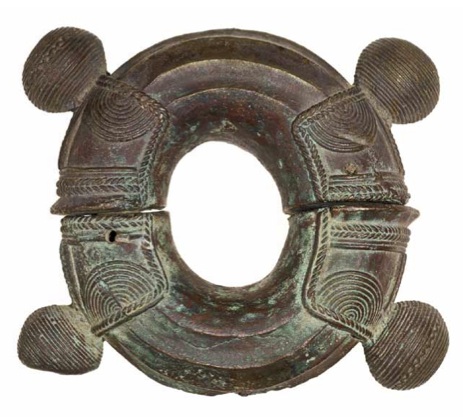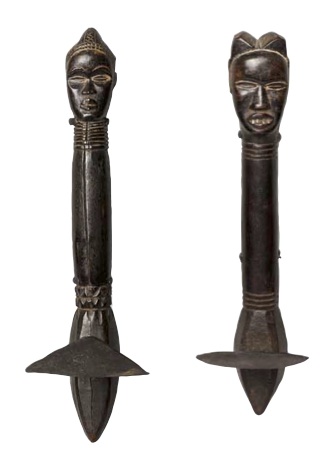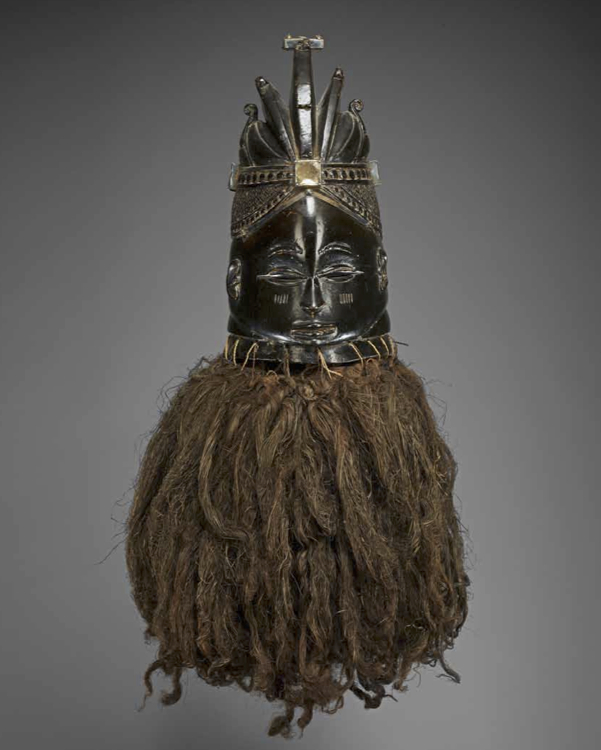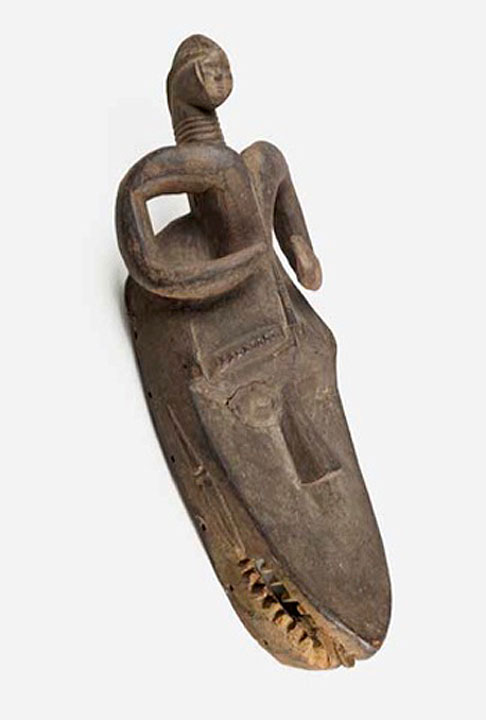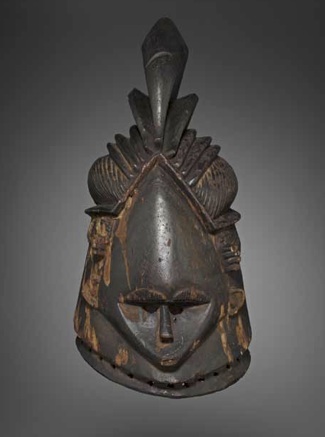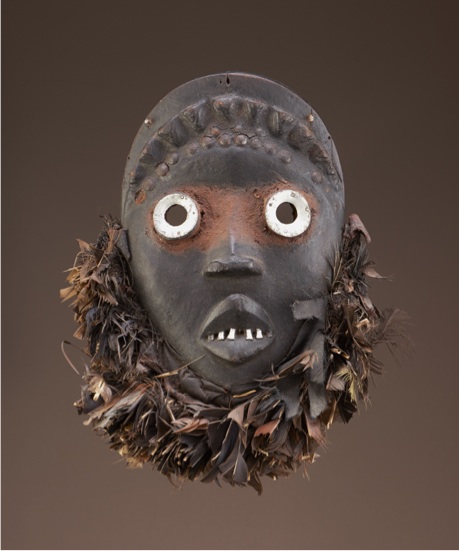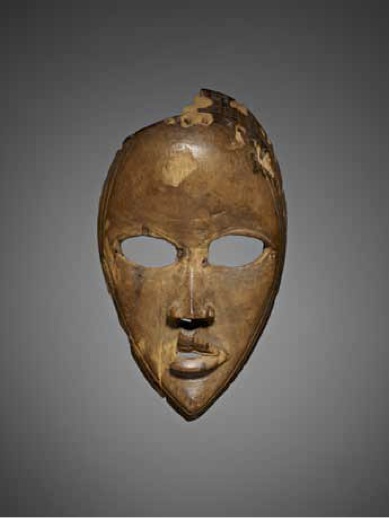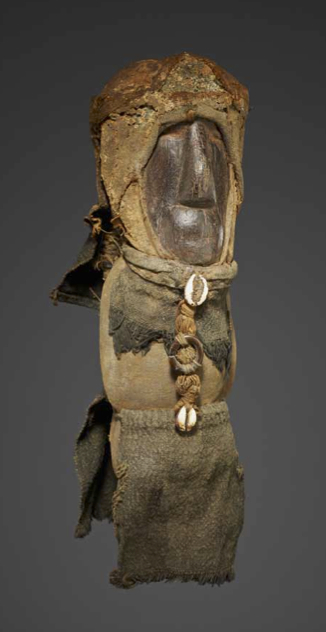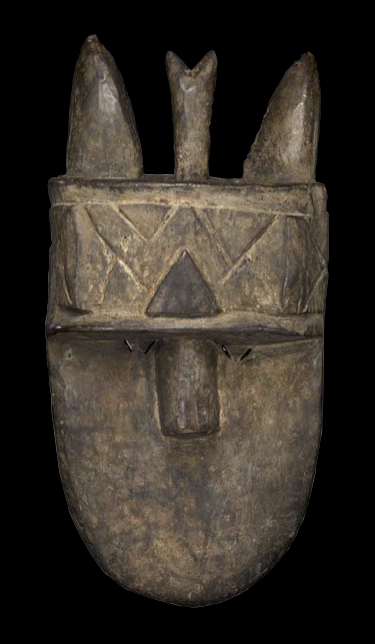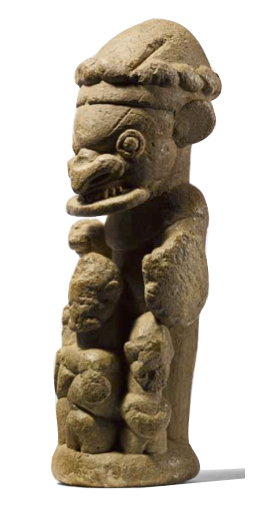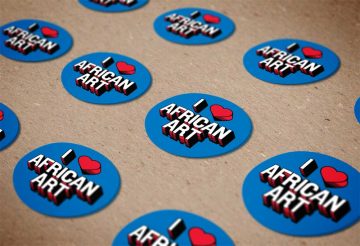
Cloth, first half of 20th century
Wood, animal fur, feathers (of the great blue turaco, Corythaeola cristata), cotton, beads
H. 9 in.
(22.9 cm) (mask)
Minneapolis Institute of Arts, Gift of William Siegmann 2011.70.1
With an emphasis on connoisseurship and the identification of specific artists or workshops, the exhibition reveals the deeply personal and scholarly connections forged by Siegmann during his many years of research on the arts and cultures of this region.
Visions from the Forests is organized by the Minneapolis Institute of Arts. Support in recognition of William Siegmann’s longstanding commitment to the arts of Africa provided by James Lowell Gibbs and Jewelle Taylor Gibbs, NIS Solutions, Simon Ottenberg, and RLJ Companies.
William Siegmann—A Connoisseur’s Eye
William Siegmann – Bill, as scholars and collectors internationally knew him – was a rare individual whose deep-seated knowledge about the arts of Africa and his exceptional eye for quality distinguished him as a true connoisseur. During many years of research and curatorial work, Siegmann developed a large personal collection of traditional African art, primarily from Sierra Leone, Liberia, and Côte d’Ivoire, which reflected his extensive fieldwork and study and the passion he had for the peoples and cultures of this region of West Africa.
Siegmann manifested a deep appreciation for the object stemming from decades of closely observing, handling, and researching works of art within their historical and cultural contexts. By surrounding himself with objects of varying quality, not just with the finest examples from a given region, he gained valuable comparative perspectives on the extent of artistic production from particular areas and art-producing groups.
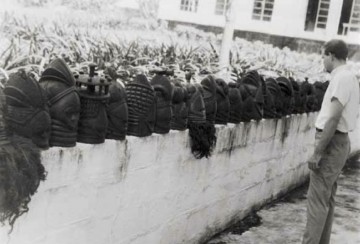
at the National Museum of Liberia, Monrovia. Photographer unknown.
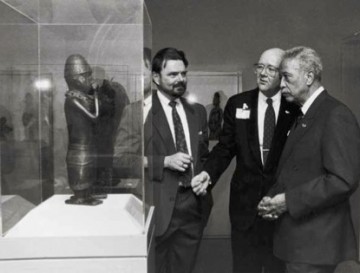
and Brooklyn Museum Director Robert Buck in the museum’s African art galleries, 1992. Photograph by
Joan Vitale Strong, photographer to the Mayor.
As you look closely at the artworks on view in Visions from the Forests, contemplate Bill Siegmann’s choices in building his collection and sharpen your own eye for quality—your connoisseurship skills—by considering:
Form and Motif
The qualities of shape, size, design, and motif that distinguish objects as similar to or different from each other. The distinctive visual vocabulary of symbols and aesthetic concepts that delight the eye and confer culturally specific meaning

Ndoli jowei Mask, late 19th century
Wood
H. 15 3⁄4 in. (40 cm)
Minneapolis Institute of Arts, Gift of William Siegmann 2011.70.4
R:
Ndoli jowei Mask, late 19th century
Wood
H. 14 3⁄4 in. (37.5 cm)
Brooklyn Museum, Gift of Blake Robinson 1998.127.1
Surface and Decoration
What a highly polished, encrusted, or elaborately decorated surface reveals about aesthetic preference or an object’s history or function. How carved, painted, attached, or woven embellishments demonstrate an artist’s skill and enliven an object’s visual appeal

Mask, first half of 20th century
Wood, cotton, plant fibers, feathers
H. 9 in.
(22.9 cm) (mask)
Minneapolis Institute of Arts, Gift of William Siegmann 2011.70.10
R:
Geh-naw Mask, first half of 20th century
Wood
H. 7 9⁄16 in. (19.2 cm)
Minneapolis Institute of Arts, Gift of William Siegmann 2011.70.11
Material and the Artists’s Hand
The significance of the artist’s selection and mastery of wood, stone, ivory, metals, and fiber in creating objects for specific purposes. How distinctive approaches to form, style, material, motif, and decoration reveal the hand of a particular artist or workshop.

Soldier
mid-20th century
Brass
H. 5 3⁄4 in. (14.6 cm)
Minneapolis Institute of Arts, Gift of William Siegmann 2011.70.24
R:
Snuff horn, early 20th century
Ivory, silver
W. 8 5⁄8 in. (22 cm)
Minneapolis Institute of Arts, Gift of William Siegmann 2011.70.40
Some associations guide boys and girls from childhood to adulthood. The female Sande (or Bondo) society, widespread in Sierra Leone and Liberia, is one such association. Sande artworks, as well as masks from the male Poro society, are on view throughout the exhibition. Poro oversees the circumcision and education of young males, in addition to playing political and judicial roles.
Masks from lesser-known associations, along with grotesque masks used for satire and entertainment in performances, attest to the diversity of masquerade arts from Liberia and Sierra Leone.
Senior women wear these beautifully fashioned helmet masks at the end of initiation ceremonies to embody Sowei, their patron spirit and the personification of grace and fertility. The mask’s characteristic elaborate coiffure, high forehead, small facial features, and ringed neck reflect idealized notions of feminine beauty and decorum. In the past, women of the Sande society wore silver and ivory pendants as status symbols, but these have been replaced in recent decades by dense necklaces of small, usually light colored beads.
Initiation of young women into adulthood used to involve female genital cutting, particularly clitoridectomy. The practice, however, has generated worldwide controversy, including within Liberia and Sierra Leone—the heart of the Sande society—where the issue has recently surfaced during parliamentary and presidential elections.
Few artistic expressions are so intimately associated with Africa as masks. Masquerades are among the most complex and prominent of Africa’s traditional art forms, bringing together the creative efforts of sculptors, performers, attendants, musicians, and spectators, while the masks themselves display a dazzling variety of shapes, functions, and expressive powers. Visions from the Forests includes large helmet masks, the more familiar masks worn in front of the face or at an angle on top of the head, and miniature masks that are often wrapped and kept on the owner’s body.
Among the Dan peoples and their neighbors, a mask—large or small—is typically created after a dream in which someone encounters a forest or household spirit. The spirit wishes to become incarnate in a mask, which is commissioned from an artist and consecrated through performances and offerings. Both large and small masks may serve as altars—focal points for human–spirit interactions, as revealed by crusty traces of food and oil on the masks’ surfaces. The function of masks may also change over time, which may be reflected in alterations and changes in motifs or patina.
Figurative sculpture is much rarer than masks in Loma culture and far less is known about its meanings and functions. Two examples are on display, a Janus-faced staff and a figure wrapped in cloth, fiber, and shells that is attached to a metal stick.
Brass jewelry also reflects prestige and wealth, from the massive bands of a bygone era that encircled a woman’s neck, waist, and legs to the more recent necklaces made of glass beads and brass pendants. During the 20th century, smiths cast decorative figures that became new symbols of prestige for the rich. The tall cast female figure on view nearby, however, is believed to have been a ritual object.
Stone figures in the “coastal style” are found on the lands of the Mende peoples and their neighbors, who believe they represent the previous owners of the land. Offerings are made to the figures to bring abundant harvests. The stone figures in the “inland styles” are found on the lands of the Kissi and their neighbors, who link them to ancestors and place them on commemorative shrines. Some have been incorporated into wood sculptures used in divination rituals. All are examples of ritual recycling, as the stone figures are repurposed for new needs.
